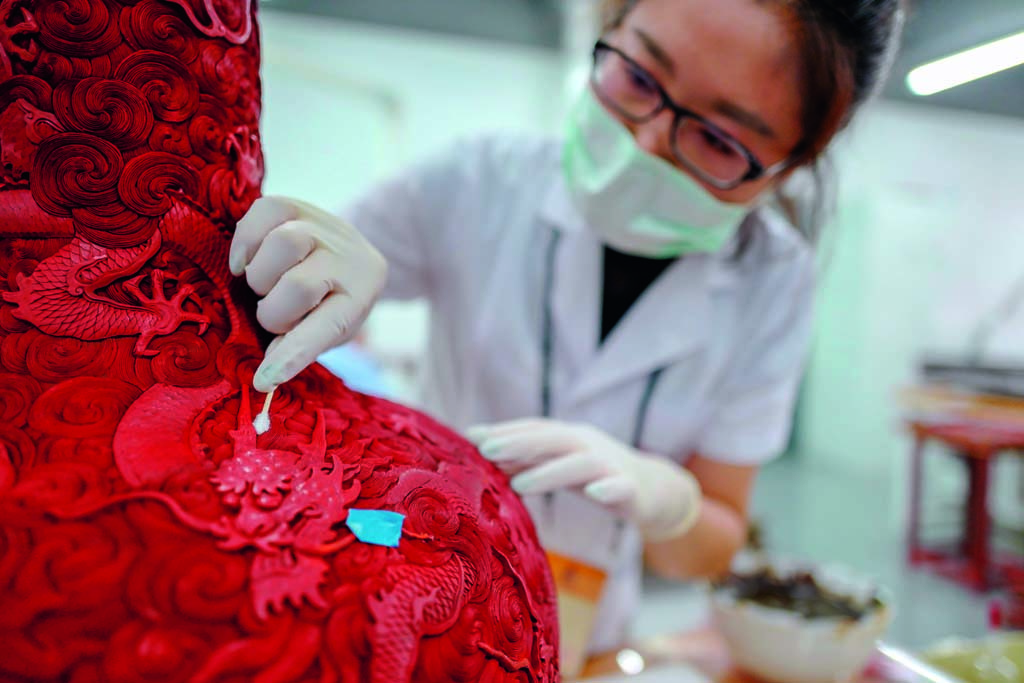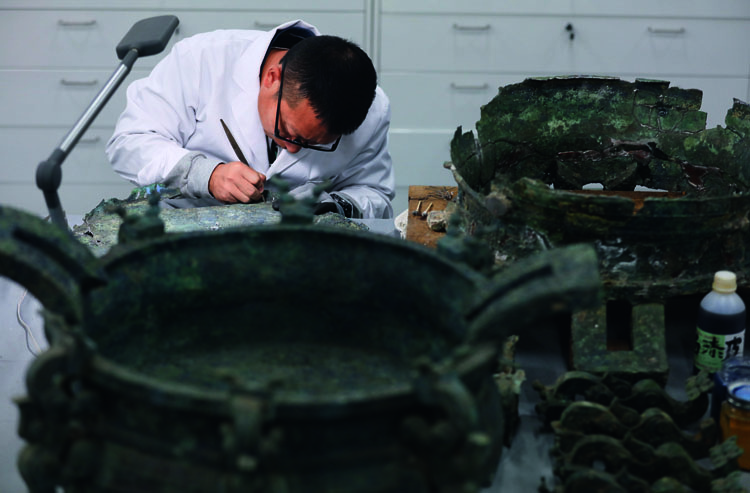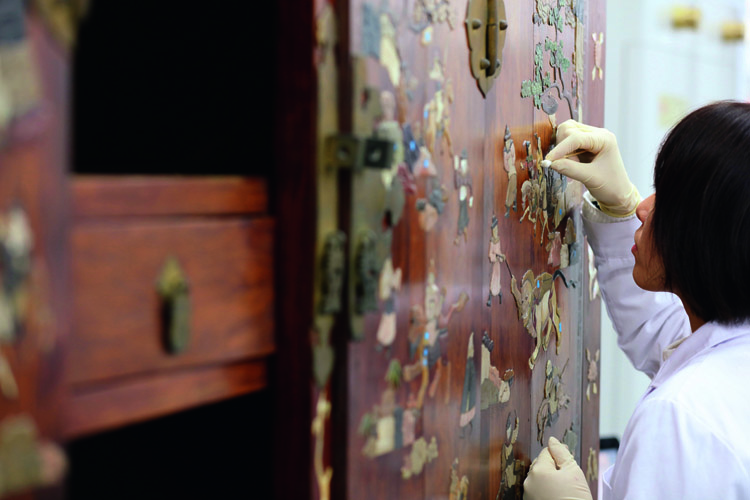Preserved for the Future

Accumulation of past experience makes the present person, and the same holds true for a nation. The Forbidden City, also known as the Palace Museum, was the political center for China’s last two dynasties for over 500 years, and now houses a wealth of art not just from this period, but also relics created in earlier days. Its holdings preserve the memories of the nation and its splendid civilization.
After lying quietly underground in tombs, forgotten storehouses, or ancient cities for thousands of years, many relics were eroded heavily or broken upon discovery. Relics in museums are not displayed as they looked upon first discovery. Many need repairs such as reassembly with glue or coloring to regain their original appearance.

December 2, 2017: A staff member of the “Relic Hospital,” a state-of-art conservation center at the Palace Museum, is repairing a piece of cultural relic. VCG
Generations of relics conservators have been working in the Forbidden City, and they continue working in the Palace Museum now, repairing numerous works of art from the storehouse of the former royal palace or discovered around the country. Relics of all kinds including paintings, bronze vessels, clocks, woodenwares and ceramics have been repaired and restored in the palace for centuries.
“You need to be able to create your own duplicates to be ready for the job,” said Wang Youliang, who joined the Palace Museum in the 1980s to preserve and restore bronze vessels.
A duplicate bronze vessel should have the same rust as the original, and it should be difficult to distinguish between them. Wang doesn’t seek to create a new work of art. He and his colleagues endeavor to preserve relics with decayed color and rust unchanged. This has been a central rule among conservators.

December 2, 2017: A staff member of the “Relic Hospital” is repairing a piece of cultural relic. VCG
Wang Jin has been repairing clocks in the Palace Museum for over four decades since he was 16 years old. The over 300 clocks he has fixed represent only a tiny slice of the many clocks in need of repair. Many Qing (1644-1911) emperors were big fans of large mechanical clocks collected from the West. Contrasting preservation of other relics, repairing a clock involves much more than the appearance. Conservators also seek to make the clock operate as it did hundreds of years ago. Wang Jin and his protege Qi Haonan were once the only two conservators in the Palace Museum capable of repairing the old clocks. Thousands of clocks remain in the storehouse, which are too many for them to ever hope to fix. Reviving them may take generations of conservators.
Wang Jin admitted clock repair can be a bit boring. All he ever hears is ticking. Getting on his team requires passion for the work and meticulous skills. Wang is confident about the skills of his protege Qi, who joined the Palace Museum over a decade ago. Wang said Qi’s skills are now almost better than his.

December 2, 2017: A staff member of the “Relic Hospital,” a state-of-art conservation center at the Palace Museum, is repairing a piece of artwork. The Relic Hospital at the Palace Museum is the biggest and best-equipped relic conservation center with the largest number of relic restoration professionals in China. Located in the west part of the Palace Museum, the Relic Hospital covers an area of 13,000 square meters. The two-floor center is equipped with the world’s cutting-edge devices for “diagnosis” and “treatment” of cultural relics. VCG
Alongside facilitating inheritance of traditional skills, the museum also has introduced modern technologies and devices such as video three-dimensional microscope and an X-ray spectrometer. Repairing textiles requires inspection and analysis with such modern instruments. The department for repairing textiles was established just in 2009, and the members are all female.
Working as a conservator can require extra sacrifice from women. “Perfume contains chemicals that may damage the relics,” noted Li Lu, a member of the textile repair department. “Textile artworks are more delicate than other relics. We can’t wear makeup at work. But we see enough natural beauty to live without it.”